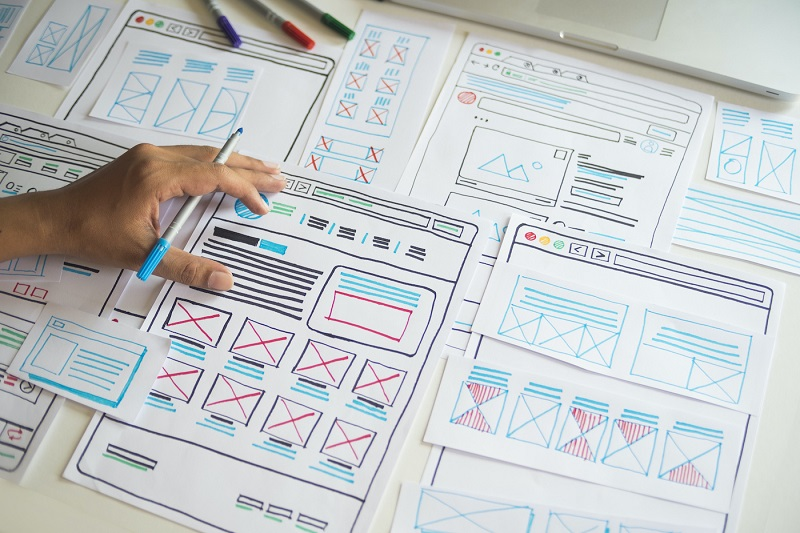ATD Blog
Don’t Limit Your Learners’ Experience
Mon Mar 01 2021

Accessibility—the quality of being easy to obtain or use and often used within the broader term of universal design.
Universal design is all around us. Whether it be the products we buy, architecture and interior furnishings, or the websites we log on to, universal design is becoming part of the new design equation. This is not surprising when considering the many populations that would otherwise be restricted from accessing the full measure of experience these things are intended to offer.
Take, for example, Herbal Essences, which has used packaging to make products distinguishable by touch. By adding a row of raised lines for shampoo bottles and raised dots for conditioner bottles, the company provide clarity to those who have visual impairments. Last year, HomePro designed a new furniture line, 7:1 Furniture Collection, named after the 7:1 color contrast ratio for web accessibility. HomePro noticed that the use of color in furniture design was limited to similar shades, so those who were visually impaired had difficult times distinguishing features. Trello’s web-based list-making application has even added a colorblind friendly mode by adding simple textures to lists to help people differentiate one label from the other. Design software such as Photoshop made incorporating accessibility within design a reality by offering a color-blindness checker. These examples deal primarily with visual impairment, but there are many other roadblocks to access.
Don Norman put it best when talking about universal design in his book Emotional Design. He writes, “Universal design, designing for everyone, is a challenge, but one well worth the effort. Indeed, the ‘Universal Design’ philosophy argues persuasively that designing for the handicapped, the hard of hearing or seeing, or those less agile than the average invariably makes an object better for everyone. There is no excuse not to design usable products that everyone can use.”
Microsoft’s strategy to “solve for one, extend to many” within its inclusive design site supports the same thinking. Whether building online courses or websites, our designs need to be inclusive of the wider audience. By making simple changes to our designs to achieve accessibility, you help those with disabilities as well as age-related challenges, temporary disabilities such as a broken arm, individuals with internet connectivity issues, users less familiar with the language, and users on devices such as phones or tablets. What might otherwise be seen as an “edge-case” design targeted to assist those users on the extremes of your audience can help those in the middle as well.
As we approach design, we need to consider and understand what accessibility means to those who would otherwise be left on the outside without these tools or pathways to learning.
Consider this insight from Ryerson University’s Understanding Document Accessibility: “Imagine that you are standing in front of a closed door. On the other side of that door is a world of information—news, entertainment, job listings, and updates from family and friends. You see other people enter that doorway, but you can’t find a way to enter. People with disabilities come up against locked doors in the digital world continually.”
The lack of accessibility means you are reaching a smaller audience and potential customers of your product or service. Worse, it could pave the way for future lawsuits by those who are prohibited from accessing by virtue of disability.
So, where do we start? Guidelines created by the Web Accessibility Consortium provide a framework for considering the many obstacles in the path of creating a truly accessible online experience. Visual, auditory, cognitive, and motor disabilities are considered.
Among the many ways to begin making your course accessible are alt-text, color contrast, tabbing order, closed captions, transcripts, optimal spacing, and much more. I will highlight just a few.
ALT Text
Alternative text is useful to those who suffer from a visual deficiency as the text serves to explain the context of the image. It is also critical for those using screen readers. When writing your alt-text, use descriptive language that enhances mindful visualization. See Articulate Storyline’s 6 Best Practices for Designing Accessible E-Learning for some great tips on how to write alt text.

Closed Captions
For users who have hearing impairments, closed captions provide a good alternative to audio and the spoken word. Providing closed captions and transcripts can be helpful for learners who have a hearing impairment or learning disability such as dyslexia; for those who are not strong readers; or for when the language of the course is less familiar. Captions may also serve users who want to absorb information at a slower pace than the audio speed, as a transcript allows users to go at whatever pace is comfortable and best suits their learning style.

Do Not Use Color to Convey Meaning
The use of color should not be the only method used to convey content. This applies to text and graphics. If you have a key word within a sentence or are highlighting important information, use bold or italics in addition to color as another way to distinguish the word. This will benefit those who may have limited color vision.

These are just a couple ways to make your course more accessible, but there are many more aspects to it. So, let’s not limit learners’ experiences. Start making your courses more accessible to all users.
